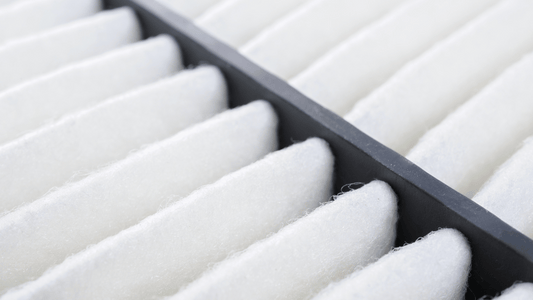Damp remediation and the removal of mould as part of a building renovation plan could be a good investment in terms of lung health. A team of occupational health researchers in Finland, Denmark, and the United States have just published a review on the impact of damp remediation on respiratory health, including asthma symptoms. They found that there is definitely evidence that mould removal has benefits but, as you might expect, further research is needed – particularly into which aspects of renovation are most helpful so you'd know where to focus your efforts.
Previous research has found a definite link between dampness and mould in buildings and adverse effects on lung health. In particular, self-reported dampness has been associated with asthma, coughing, breathlessness, and wheezing. The World Health Organisation issued guidelines and information on mould, damp and health in 2009.
Exposure to damp occurs at home, in the workplace, and at school or nursery. In this new study, the researcher's comment that two-thirds of houses and 60% of apartments in Finland have damp problems, while exposure to mould in the workplace was the most frequently reported cause of occupational asthma. It is mould that causes ill effects on lungs, not damp or moisture itself. Mould is a type of fungus which produces spores (its equivalent of seeds) that can be inhaled, thereby causing symptoms. A particularly troublesome and widespread mould is Aspergillus which can cause Allergic Bronchopulmonary Aspergillosis (ABPA). People with asthma may develop ABPA when they become allergic to Aspergillus spores. Mould does not grow without dampness which is why the WHO guidelines recommend prevention of mold-related health problems by the renovation. However, there has been no evidence of the effectiveness of renovation procedures in terms of improving lung health – which is why this new review was carried out.
The researchers found eight studies on the impact of mould and damp removal on health, covering 6538 participants. The quality of the research was variable (as is often found in this type of review). In summary, the evidence shows that:
- Houses: Compared to taking no action, damp remediation reduced asthma-related symptoms and lung infections. It also reduced the use of asthma medication among people with asthma.
- Offices: Repairing a mould-damaged office reduced asthma-related and other respiratory symptoms.
- Schools: Extensive remediation of school buildings did not reduce the number of asthma symptom days in children with asthma. Nor did reports of stuffy nose, runny nose, dry throat, eye irritation, or hoarseness decrease among both pupils and adults working in the school. But the number of emergency and in-patient visits did go down, so that was a plus. Also, there were fewer pupil visits to the doctor with cold symptoms (so maybe fewer days off school, although this was not reported).
Mould removal and damp remediation can mean many things. For instance, the damp-damaged material can be removed and replaced. The causes of dampness, such as a leaky roof or pipes can be repaired, and the building can be cleaned up. You should capture mould spores by using an appropriate air purifier and speciality cleaning products (such as Allersearch's AllerMold Mould Spray). Improvements to heating and ventilation can also take place. In these eight studies, different levels of remediation were carried out so we don't really know which kinds of interventions are going to be most effective. Is it enough to remove mould patches, or do you also need to pay attention to ventilation issues? It'd be good if further research could provide some answers.



